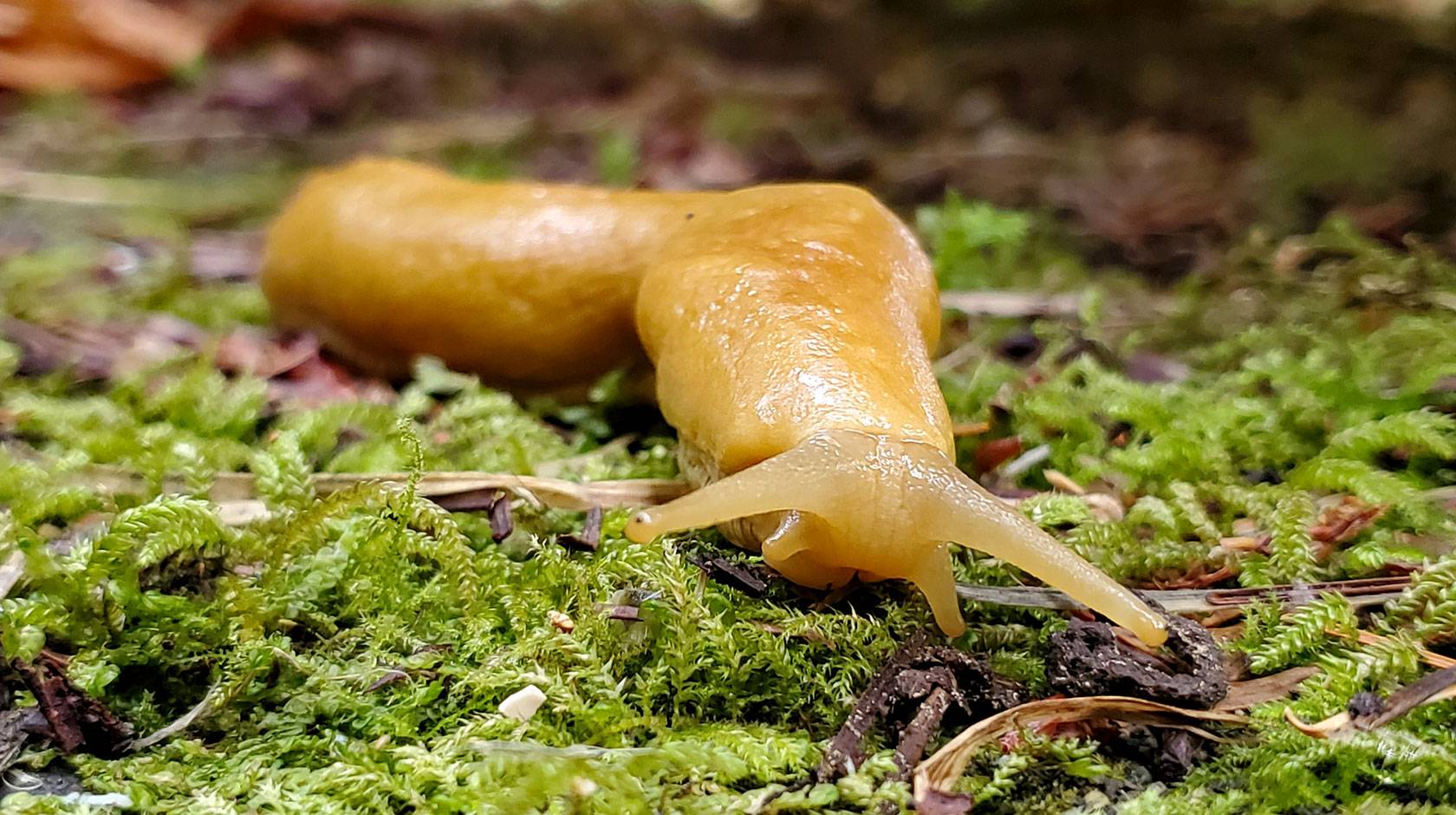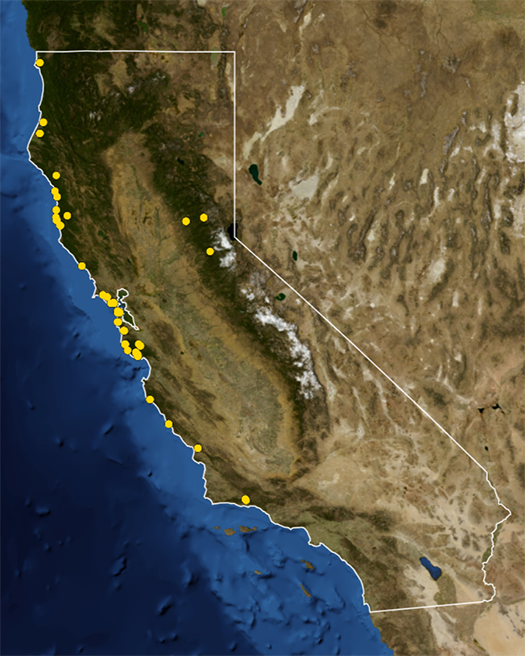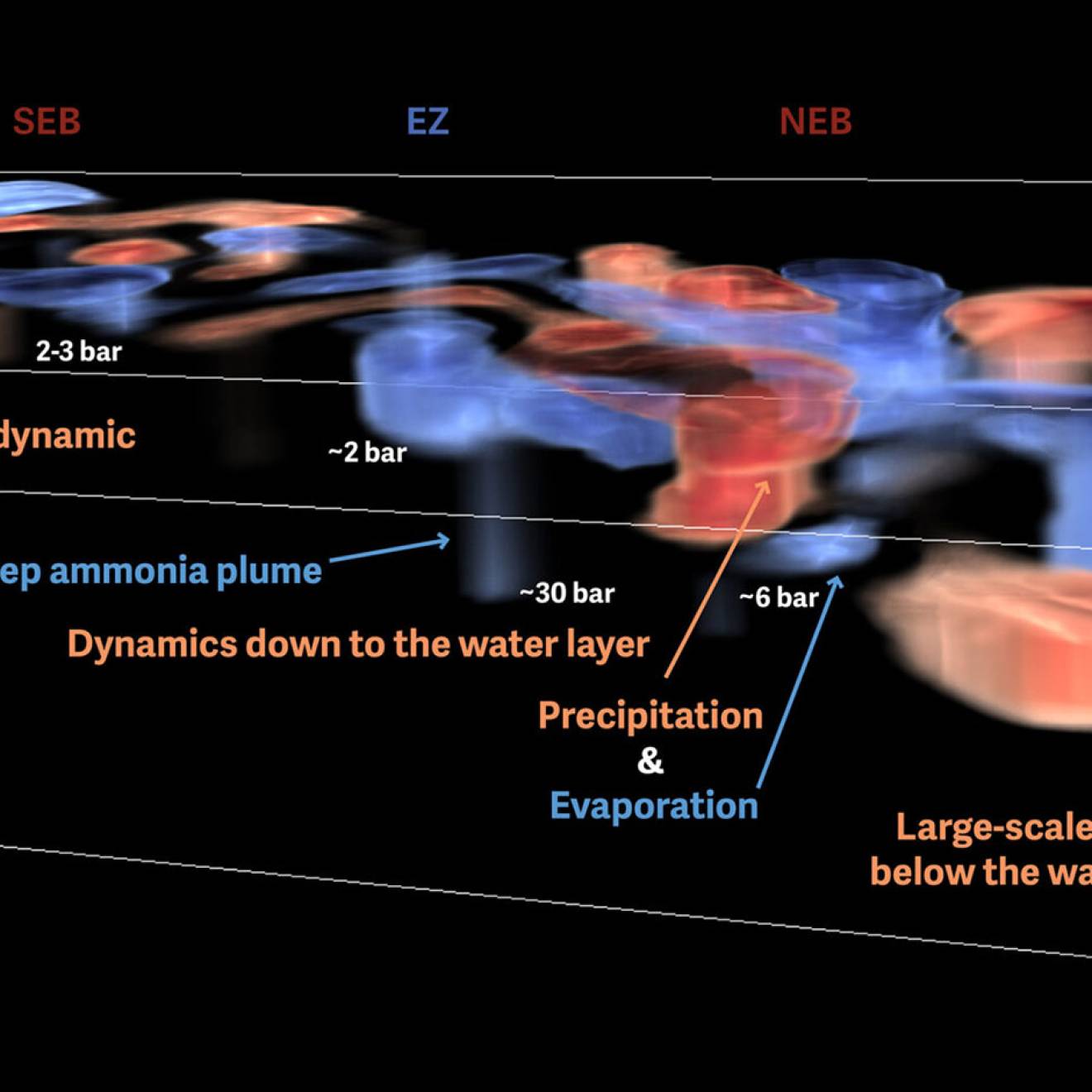Emily Cerf, UC Santa Cruz

Scientists at UC Santa Cruz have completed the first end-to-end genome of the iconic Pacific banana slug, a species synonymous with California’s coastal redwood forests and the university's beloved mascot.
The published genome will serve as a resource for further investigation into the slugs’ unique genetics that produce characteristics like its famed gelatinous, numbing slime, as well as its ability to reproduce with itself.
This project may inform conservation policy in the face of climate change as one of the species involved in the larger California Conservation Genomics Project (CCGP). This collaborative effort by scientists across the UC system aims to produce complete reference genomes of 230 plant and animal species that are endangered, endemic, or otherwise important to the biodiversity of the state to serve as a resource for further biological and conservation work.
The team, led by Professor of Biomolecular Engineering Russell Corbett-Detig, published its findings in a new paper in the Journal of Heredity. Further work by their lab outlines three main populations of Pacific banana slugs throughout California.
“The thing that’s nice about banana slugs is that they don’t move a lot, so they’re representative of the climate you find them in,” Corbett-Detig said. “This has the potential to be really interesting in terms of their connectedness to the environment as compared to other species in the state.”
Studying slugs
Over the years, scientists have observed and identified several species in the banana slug genus living throughout California and beyond, but research has never clearly defined the genetic differences between the slugs. Their ability to self-fertilize, known as “selfing,” impacts their populations and makes them particularly interesting to study.
“We want to understand how the populations are related to one another and if there are remote populations in certain areas,” said Max Genetti, a Ph.D. student in Corbett-Detig’s lab who is the paper’s first author. “It’s uncertain how often they're actually breeding with one another and how often they're just breeding with themselves or with very closely related individuals.”
This project focused on the Pacific banana slug (Ariolimax columbianus), which is known as the “type species” for banana slugs because it is most representative of the traits traditionally associated with the genus. The Pacific banana slug is characterized by its sometimes-dappled yellow coloring and impressive size that ranks it the second-largest land slug in the world. They often live in the coastal forests of the Pacific Northwest, a companion creature to the iconic redwood trees, and have been found from the San Francisco Bay Area northward to Alaska.
UC Santa Cruz’s banana slugs — the all-over bright yellow ones seen on most misty mornings along campus trails — are Ariolimax dolichophallus, a smaller banana slug species found in the central and southern regions of California.
A slimy challenge
While trying to sequence banana slug DNA as part of a graduate training program at UCSC, Genetti and others discovered that it is particularly difficult to sequence these slugs because of the physical and chemical properties of their sticky slime. This motivated them to step up to the challenge and create a complete sequence of the banana slug genome, in which every chromosome of the species’ genetic information is detailed with no gaps or errors.
Corbett-Detig connected his group’s banana slug sequencing efforts to the CCGP, where as one of only two land mollusks represented in the project’s 230 species, it stands to reveal important information about the state’s genetic diversity. UCSC scientists gathered DNA samples from more than 100 individual banana slugs throughout California, becoming well-accustomed to the particular microclimates and times of day that are ideal for tracking down slugs in their forested environments.
Then, the researchers figured out how to best extract DNA given the challenges presented by banana slug slime, which has a unique molecular makeup that makes the usual techniques for isolating the genetic material ineffective.
“You basically have to directly address the slime — it’s the first thing that you get rid of. Then you can extract the DNA and separate everything else out after,” Genetti said.
Once extracted, the DNA was sequenced and assembled into a complete genome, a process carried out by UCSC Assistant Project Scientist Merly Escalona, who leads reference genome assembly for the entire CCGP. Despite the difficult extraction process, the banana slug DNA was able to be run smoothly through the algorithms that turn raw sequencing data into a fully readable reference genome. The banana slug genome measured 2.3 gigabases — relatively close to the human genome size of 3.4 gigabases.
“Once you have the genome published, there's a lot of other things you can learn,” Escalona said. “Once gene information is added through genome annotation, the slug community can use this to learn about any important chemistry or toxicity characteristics.”

Researchers gathered data from banana slugs throughout the state.
Slug spread
Initial efforts from Corbett-Detig’s group to better understand the dynamics of banana slug population distribution throughout California have revealed three main groupings statewide: one in the central coast including Santa Cruz; a second in the south coast; and the third and largest group, which stretches from the Bay Area north to the Oregon border and east into the Sierra Nevadas.
“There is pretty discontinuous genetic variance among these three groups,” Corbett-Detig said. “That tells us there has been historical and apparently continued recent separation of relatively large regions of California.”
The researchers plan to continue to characterize the populations across the state, and possibly investigate the unique numbing properties of their slime.
At a very local level, Corbett-Detig dreams of sampling banana slugs on the UCSC campus and throughout Santa Cruz to learn the secrets of how all these slugs are related to each other.

